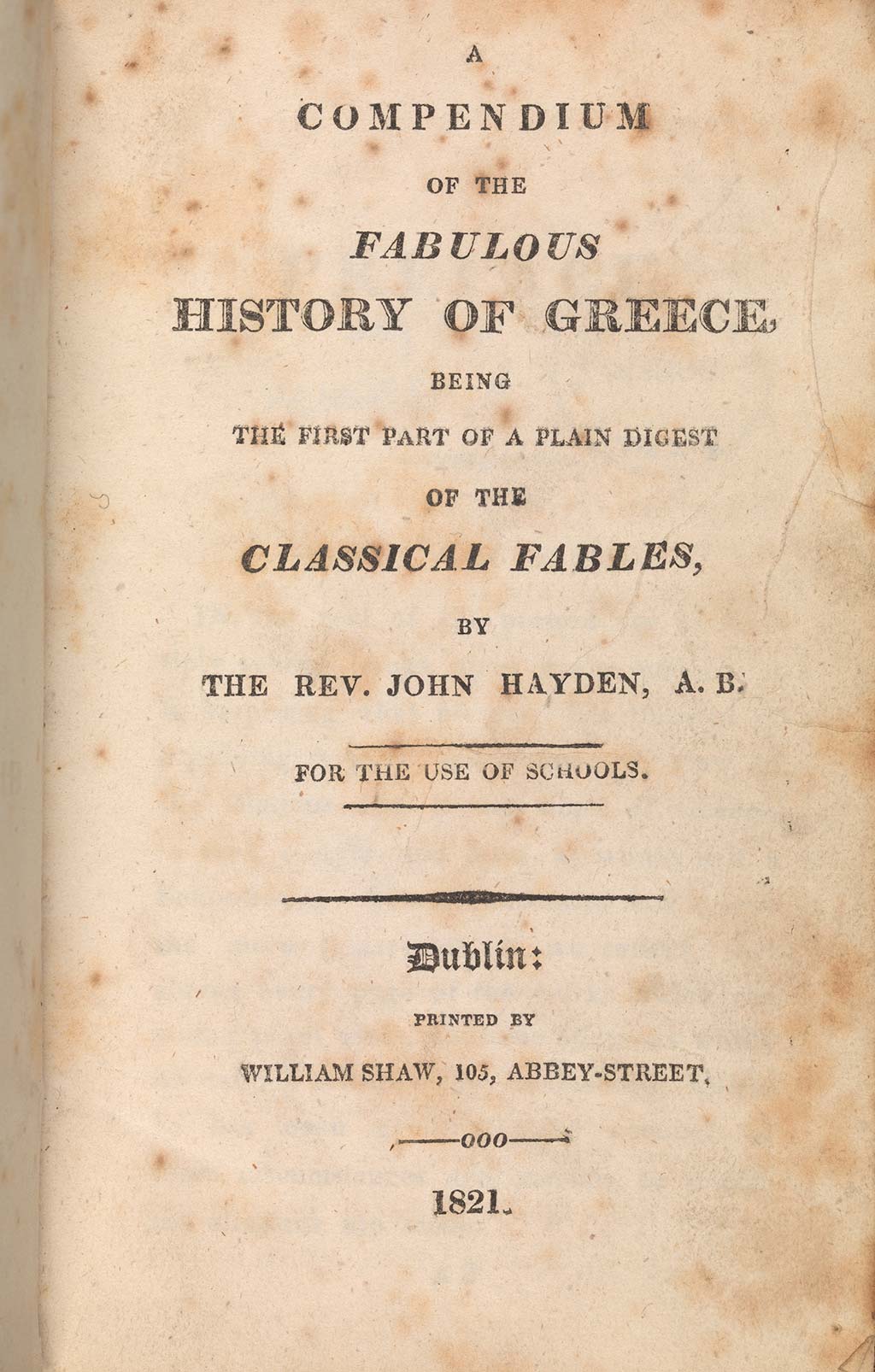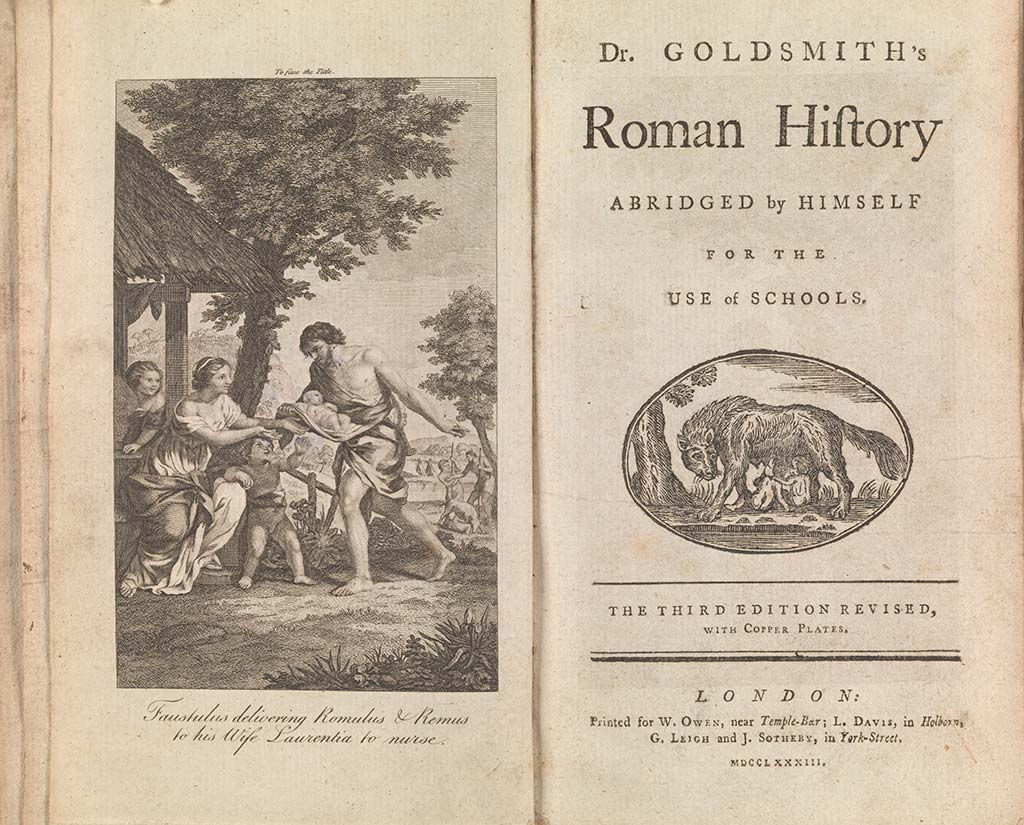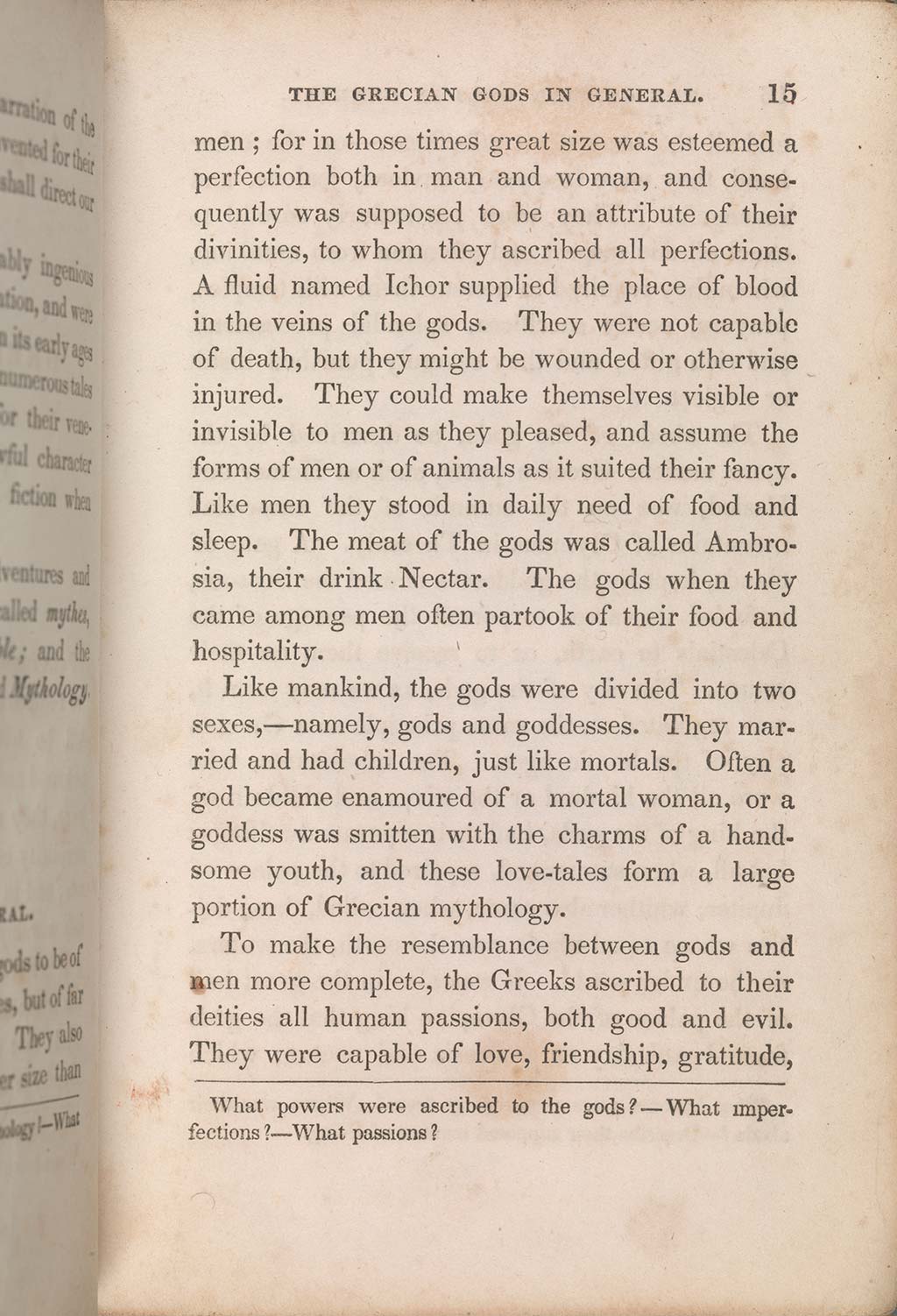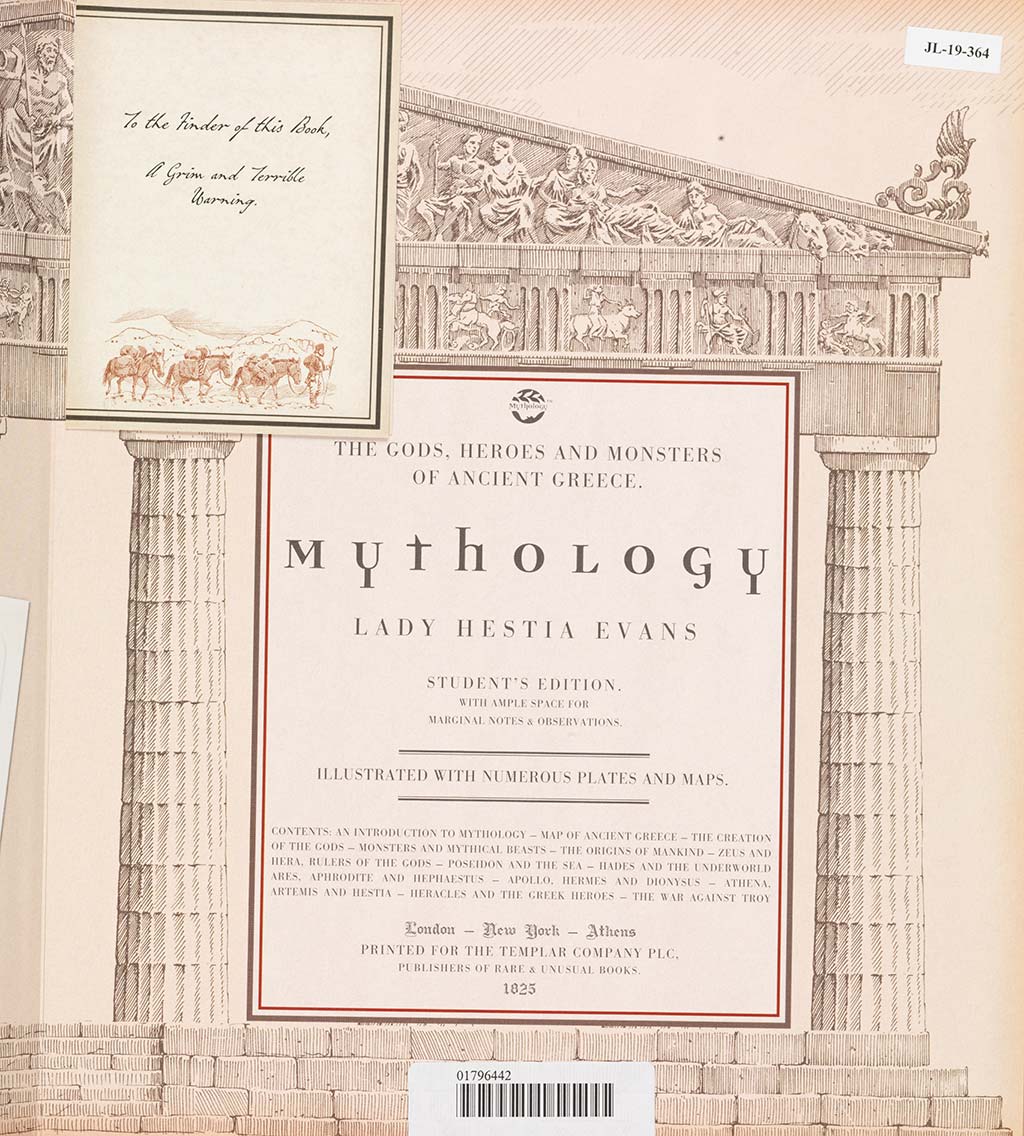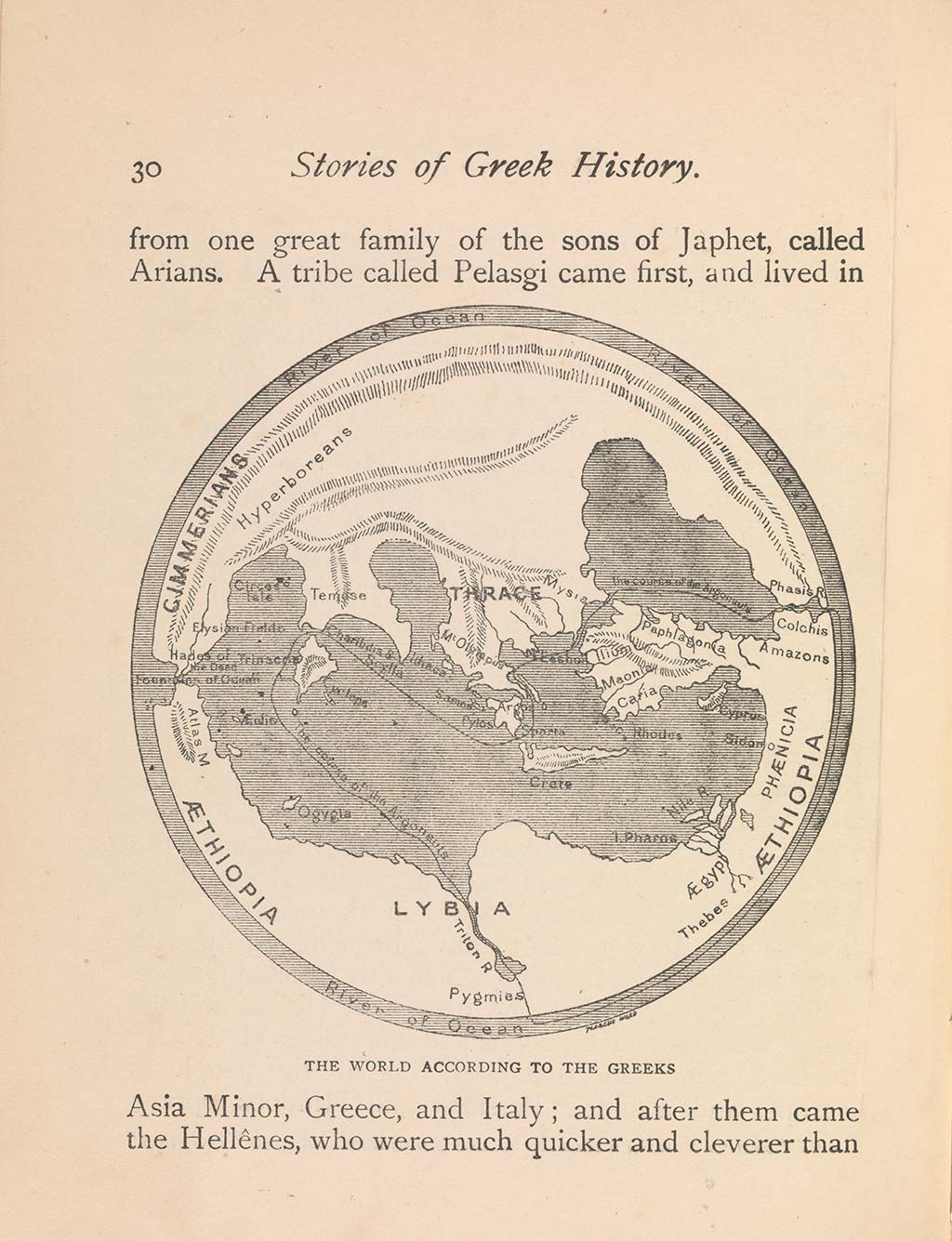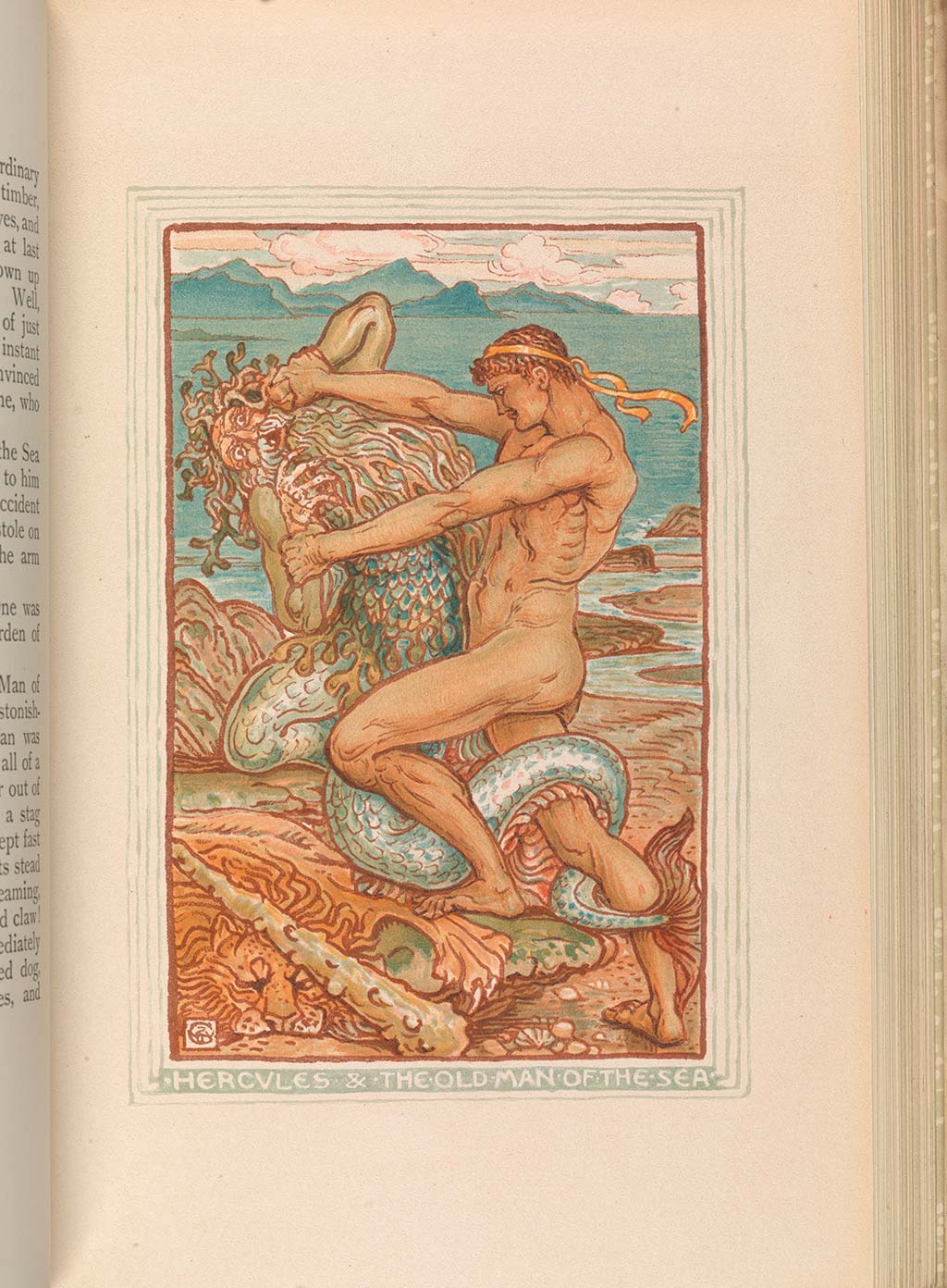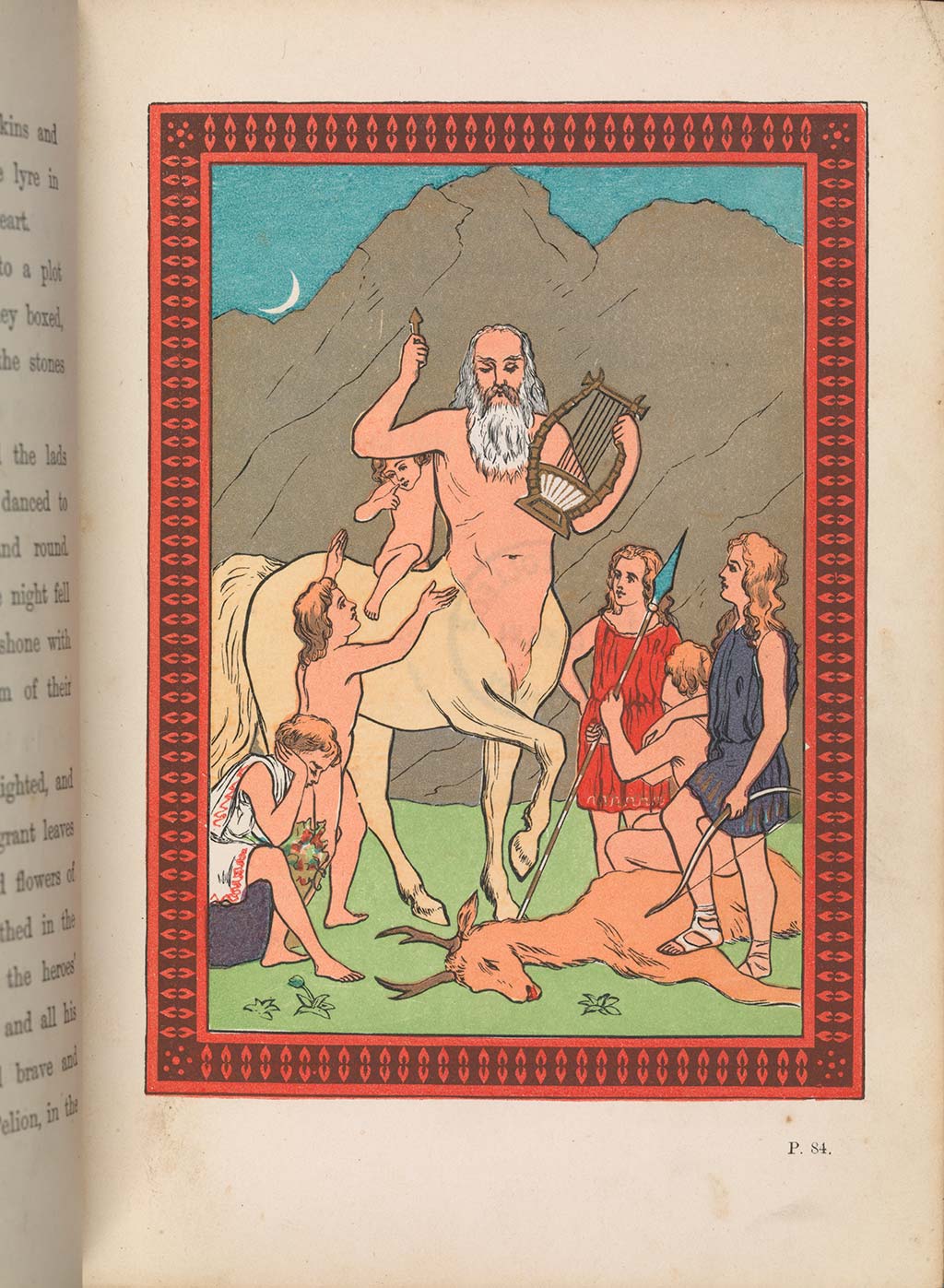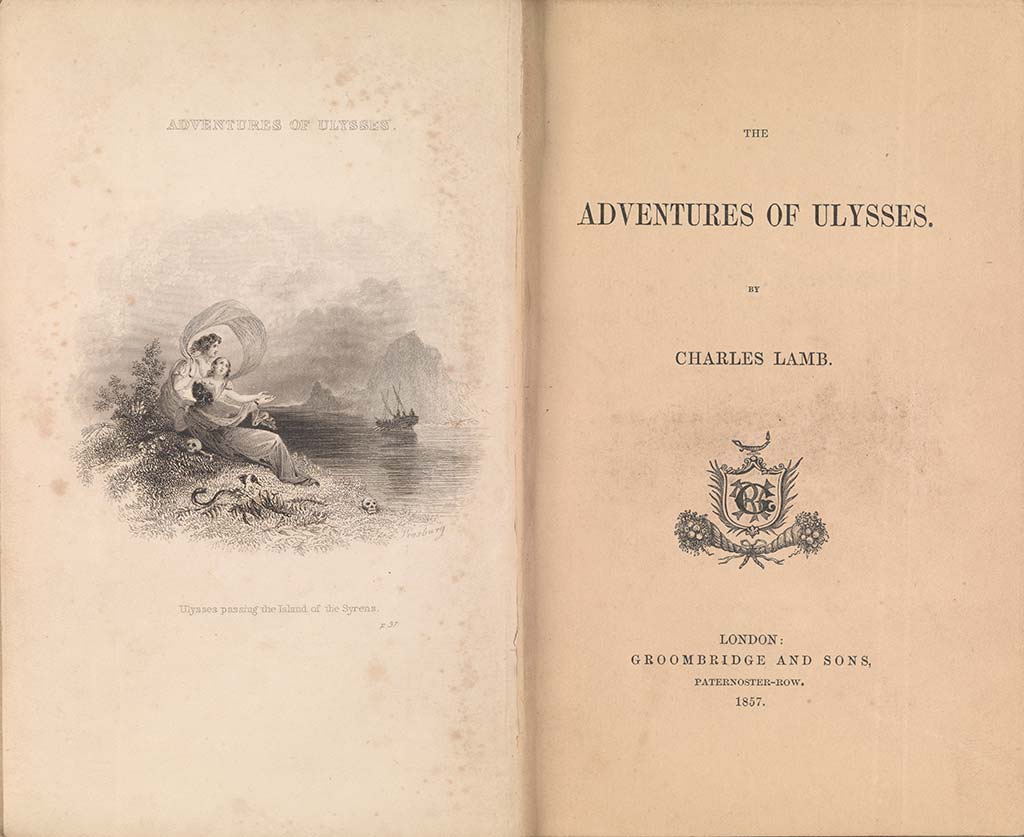Classical Myths
Graeco-Roman mythology provides us with a family of sky gods who, having defeated the Titans, are led by Zeus, the patriarch of the pantheon. Although living on a mythical Mount Olympus, the gods participate in the realm of the mortals; the lives of mortals and immortals are always intertwined.
The main sources for Greek myths are Homer’s epic poems the Iliad, set during the Trojan War, and the Odyssey, which relates the journey of Odysseus. It is believed they were composed in the 8th century B.C. Along with Odysseus, these myths provide us with numerous heroes including Heracles, Jason, Helen of Troy, and Theseus, who are called to a life of adventure and experience various rites of passage.
The Romans absorbed the Greek gods as their own, changing names, placing a greater emphasis on gods as abstractions, and incorporating myths that explain the foundation of Rome. It was under the rule of the Emperor Justinian that these tales were replaced by a Christian mythos.
Many of these classical myths were made accessible to children in educational environments throughout the centuries, with educators noting the importance of providing a foundation in classical education so that children would understand fully the classical references in art, literature, music, poetry, and philosophy.
Classical Myth and Education
John Hayden
A compendium of the fabulous history of Greece, being the first part of a plain digest of the classical fables
Dublin, 1821
OLS POL 5661
In his preface to A compendium of the fabulous history of Greece, Reverend John Hayden laments the lack of a suitable and comprehensive book on classical myths for use in the schoolroom. He believes that accessing such myths through the traditional use of Latin notations and classical dictionaries detracts from the pleasure and enjoyment of reading these heroic tales.
Oliver Goldmsith
Dr Goldsmith’s Roman history abridged by himself for the use of schools
London, 1783
OLS POL 1474
Irishman Oliver Goldsmith (1728-1774) was a novelist, playwright, and poet, and studied at Trinity College Dublin. His Roman history opens with an account of Aeneas, son of the goddess Venus and Prince Anchises, and ancestor of Romulus and Remus, the central characters of Rome’s foundation myth.
Thomas Keightley
The mythology of ancient Greece and Italy: for the use of schools
New York, 1843
OLS POL 2011
The Mythology of ancient Greece and Italy (1831) was written by Irishman Thomas Keightley (1789-1872) who studied at Trinity College Dublin, but left without finishing his degree. He was urged by educator Thomas Arnold to create history books for use in English public schools. Keightley aimed to produce material that was an improvement on the work of Oliver Goldsmith.
Dugald A. Steer
Mythology
Dorking (Surrey), 2007
JL-19-364
Children’s fascination with classical myths persists today and information and educational books on the worlds of ancient Greece and Rome take many forms, as is evident from Steer’s comprehensive and multi-modal text, Mythology. Within these pages, the reader is presented with information on the complex dynasties of Greek mythology as well as an exploration of themes such as death, love, suffering, and fertility.
Title-page reproduced by permission of Bonnier Publishing.
Charlotte M. Yonge
Aunt Charlotte’s stories of Greek history
London, [after 1882]
OLS POL 4415
Englishwoman Charlotte M. Yonge (1823-1901) was a prolific writer, an early critic of children’s books, and had a significant impact on the development of children’s literature. Born into a religious family, she began teaching in her village school in Hampshire when she was as young as seven years old, and taught there for 71 years. In her book, Yonge stresses the importance of the classical education of young readers.
Heroes
Nathaniel Hawthorne
Illustrated by Walter Crane
A wonder book for girls & boys
London, 1892
Gall.20.h.9
Written by U.S. author Nathaniel Hawthorne (1804-1864), A wonder book (1852) was one of the first popular retellings of Greek myths for children. Walter Crane (1845-1915) was an English artist and illustrator who, along with Kate Greenaway and Randolph Caldecott, was central in developing the picture book towards the end of the 19th century.
The story of Hercules conforms to the typical journey of the hero. He is famous for his physical strength, his voyage to the Underworld, and his search for immortality.
Charles Kingsley
The heroes; or, Greek fairy tales for my children
London, 1875
OLS POL 2037
English author Charles Kingsley (1819-1875) was unhappy with Nathaniel Hawthorne’s A wonder book (1852) and his treatment of Greek myths. In response, Kingsley wrote and illustrated The heroes (1856) for his children. Kingsley is best remembered for his classic fantasy The water-babies (1862), a text that marks the beginning of the first golden age of children’s books, a period which ended with the outbreak of World War I.
Charles Lamb
The adventures of Ulysses
London, 1857
OLS POL 2153 no.1
Charles Lamb (1775-1834) was an English writer, famous for his children’s versions of Shakespeare’s plays which he produced with his sister Mary Lamb. The adventures of Ulysses was originally published in 1808.
Having angered the gods, the hero Odysseus (Ulysses) must travel for ten years after the Trojan War before he can find his way home. The Odyssey myth explores ideas of loss, rebirth, and transformation.
The tale of the hero Theseus, who must confront the darkness and the monster before returning home, can be found in many of these collections for child readers. In this story, King Minos of Crete orders that seven unarmed youths and seven unarmed maidens are sent annually from Athens as tributes to feed the Minotaur – a half-bull and half-man creature that lived in the Labyrinth created by Daedalus. With the help of Ariadne, Theseus defeats the monster and escapes.
Suzanne Collins (1962-) draws upon a number of myths in the creation of the bestselling The hunger games (2008). The plot device of tributes sent to participate in the annual hunger games is similar to that of tributes sent from Athens to Crete in the myth of Theseus and the Minotaur.

